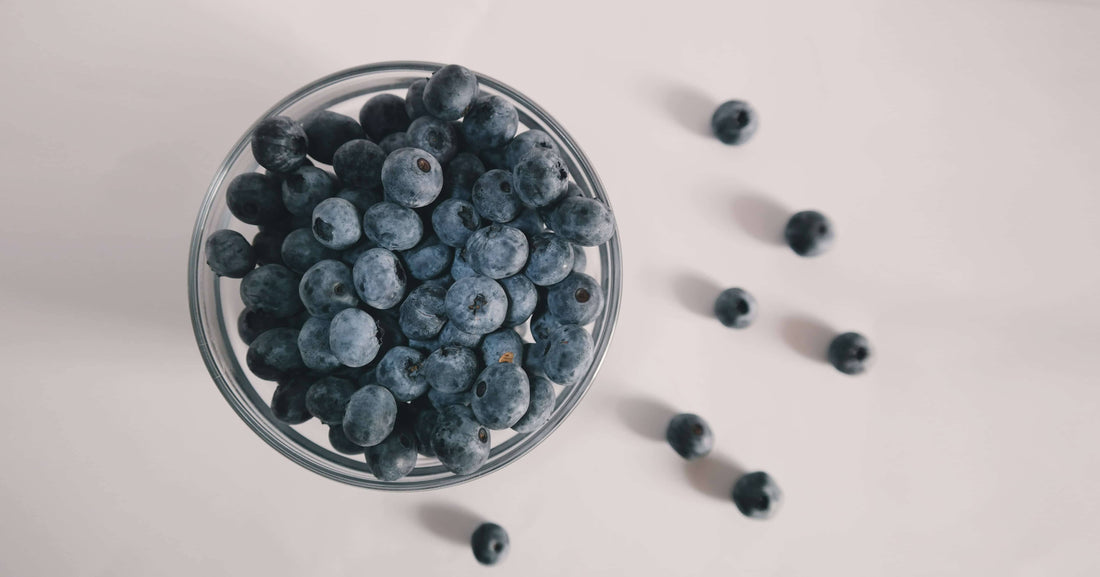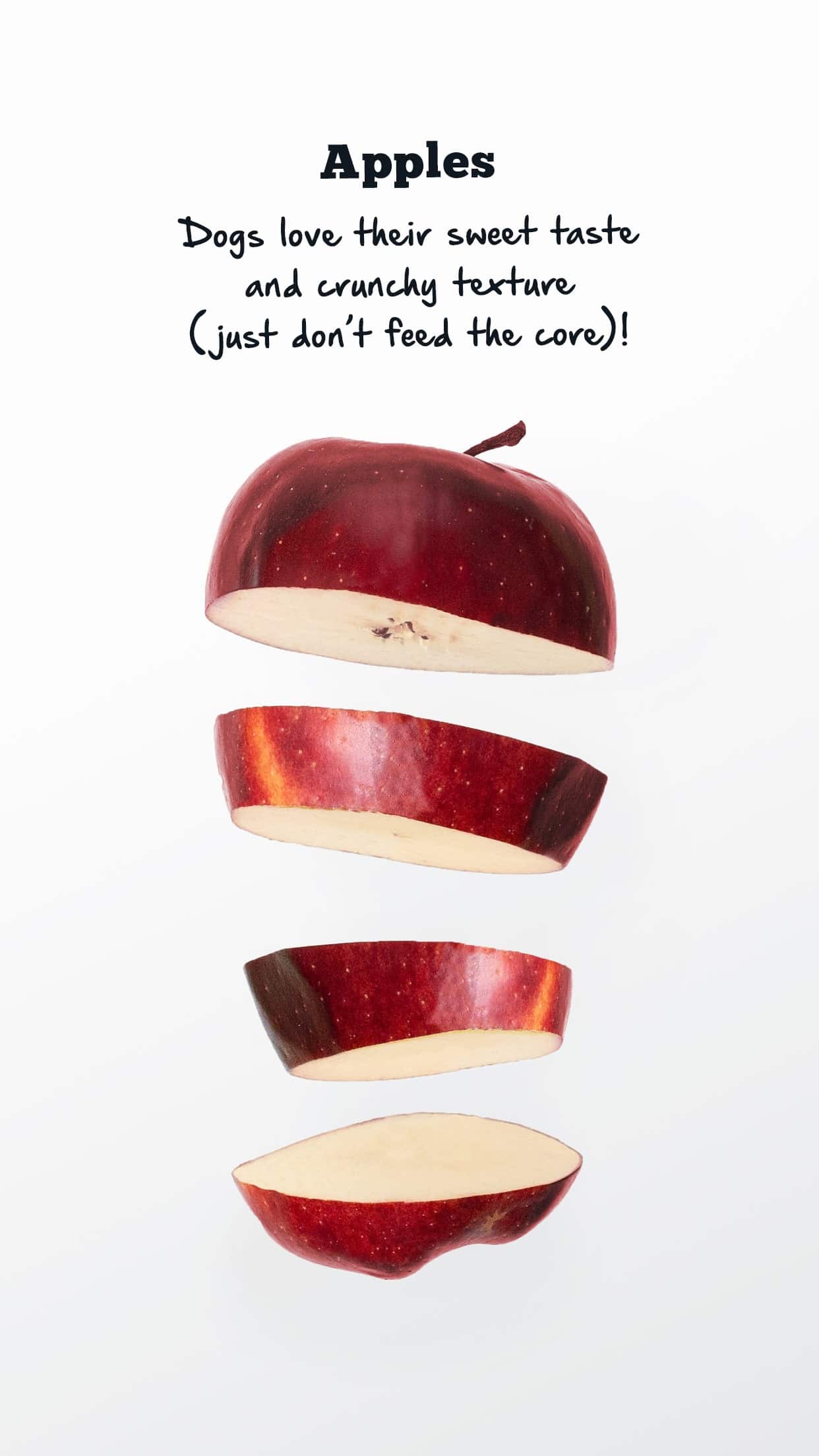
7 Safe Summer Fruits for Dogs
When the weather is beautiful, there are all types of activities you can do with your dog.
Visiting the park, hiking, or spending the day at the beach are just a few of my favorites.
No matter the activity, If you’re out enjoying the sun, you’re bound to exert plenty of energy. Warm summer days can be extra dehydrating, and eventually, you and your pup will need to refuel!
If you’re reaching for a snack, it’s best to keep your body energized with something refreshing and nutritious.
Why not some delicious fruit?
Easy to pack on the go, fresh, delicious fruit is an excellent option for keeping yourself hydrated with a burst of flavor. But what about your dog? Can you pack fruit for the two of you? Are all fruits safe for them to eat?
Let’s go on a journey through the world of fruits for dogs! We’ve picked out 7 of the best fruits you can feed your dog to ensure they have plenty of energy to power through playtime.
As always, speak to your trusted veterinarian before feeding any new treats, including any fruits on this list. As a rule of thumb, treats should not make up more than 10 percent of your dog’s daily diet.
Why Fruit is Good for Dogs
Fruits contain many vitamins, fiber, and antioxidants. When fed properly, there are plenty of fruits that are healthy for dogs in the same way they’re healthy for us. For example, many fruits have high water content, making them an extra refreshing, tasty treat that helps keep you and your pet hydrated during the summer and year-round.
7 Safe Summer Fruits for Dogs
1. Watermelon
Watermelon is a popular summer fruit. From drinks to dessert, and even main dishes, the crisp sweetness of watermelons are sure to quench your thirst all summer long. Watermelons are 92 percent water, so they are especially refreshing on a hot day!
Why Watermelon is Good for Dogs
“Watermelon is low in calories and sodium. Watermelon is a fat-free and cholesterol-free food which makes it a very healthy treat choice. Although watermelon contains a good amount of sugar, the fiber is able to isolate much of the sugar, preventing it from being released into the bloodstream too quickly.” Lindsay Tracy, Director of New Product Development at Redbarn Pet Products, said.
Watermelon also contains lycopene. Lycopene is a powerful antioxidant with many health benefits, including sun protection, improved heart health and a lower risk of certain types of cancer.
Although the fruit contains many beneficial nutrients for your dog, watermelon should not make up a large part of your dog’s diet.
How To Feed Watermelon to Your Dog
The seeds from watermelon can pose a problem for dogs. Watermelon rinds should not be fed to your dog, as this part of the fruit is tough and generally difficult to chew. This causes dogs to swallow pieces of the rind whole, which may induce intestinal blockage. If your dog does ingest any seeds or the rind of the watermelon, you should be on the lookout for signs of intestinal blockage for at least 25 hours after consuming.
Another tasty way to treat your pup to this summertime snack is to cut the watermelon into bite-sized pieces and stick them in the freezer. Your dog will surely wag their tail for this bite-sized popsicle in the heat!

2. Blueberries
Blueberries ripen in the summer, and you can find these tiny berries in recipes for jams, cakes, pies, muffins, drinks, salads and more. But can your dog enjoy blueberries with you?. Yes, as long as they’re fresh!
Why Blueberries Are Good for Dogs
Blueberries are low in fat and calories, but high in fiber, making them a great natural treat for the health-conscious dog (or cat). They’re also a natural source of the vitamins essential to canine health, including A, C, E, and K. Blueberries also contain phytochemicals, a naturally occurring nutrient in plants linked to fighting cancer.
The antioxidants found in blueberries also help fight off free-radicals. Studies by the United States Library of Medicine National Institute of Health also show blueberries reduce the effects of brain aging for dogs. This makes blueberries a true superfood and especially beneficial for senior dogs.
How to Feed Blueberries to Your Dog
You can feed your dogs fresh blueberries. Because blueberries are already small, you won’t have to worry about cutting them up into bite-sized pieces. Blueberries can still pose a choking hazard for small dogs, however, so you can also mash them up into a paste or add them to a creamy smoothie. Try frozen blueberries for a cool treat on those hot summer days.
3. Strawberries
There’s nothing quite like a summer dessert featuring sweet summer strawberries! Strawberries are the first fruit after rhubarb (not on this list) to ripen in spring and early summer. And to everyone’s delight, strawberries are a summer safe fruit for your dog.
Why Strawberries Are Good for Dogs
Just like their blue relatives, strawberries are a great source of antioxidants, high in fiber, and vitamin C.
Ever heard of DIY’s that suggest strawberries for teeth whitening? Strawberries actually contain a unique enzyme known to help whiten teeth— and that includes your fur babies!
How to Feed Strawberries to Your Dog
“Strawberries are high in natural sugar, so just a tiny piece of strawberry is sufficient as a special summer treat. Like all fruits and berries on this list, stick with fresh strawberries and do not feed your dog canned or preserved strawberries.” Tracy says.
4. Cantaloupe
Cantaloupes are the star of many sweet and savory recipes, including salads, side dishes, and even cocktails. Like most melons, cantaloupes grow round and plump in the summer. If you’re cutting up an entire cantaloupe, it can be tempting to offer some of the tasty treat to your dog. Luckily, cantaloupe is a safe treat for dogs. Give in to those temptations!
Why Cantaloupe is Good for Dogs
“The tiniest little piece of cantaloupe can provide vitamins A, B complex, C, plus fiber, beta-carotene, potassium, magnesium, thiamine, niacin, pantothenic acid, and folic acid.” Tracy states. “Cantaloupe contains large amounts of water and fiber, making it a tasty and refreshing treat for both you and your dog. The high water and fiber content in cantaloupe also promotes healthy digestion and adequate hydration.”
How to Feed Cantaloupe to Your Dog
Cantaloupe should be introduced slowly and fed in moderation. Cantaloupe is high in sugar, which can be a concern for dogs with diabetes. Too much can lead to upset stomachs and, if severely overfed, canine obesity. Like watermelon rinds, cantaloupe rinds are tough and fibrous. Do not feed your dog melon rinds, as this can seriously harm your dog’s stomach and digestive tract.
5. Apples
Apples are a safe treat for dogs, and many dogs love their sweet taste and crunchy texture. Most apples will taste completely different depending on where they were grown. You can find apples everywhere in the fall, but there are only a few varieties that ripen in the summer. Summer apples are just as healthy as winter apples, though, and will taste even better when it’s their season to grow!

5 Apples That Ripen in the Summer
1. Lodi Apples
These yellow apples first came about in 1924 and have since remained a staple summer snack. Lodi apples make great applesauce you and your dog can enjoy!
2. Summer Rambo Apples
These sweet apples with the silly name date back to 1535, originally grown and harvested in France. Now, you can find them all over the United States.
3. Yellow Transparent Apples or Grand Sultan Apples
These pale yellow apples have a tart and crisp flesh, making them very similar to the beloved Granny Smith Apple. These apples ripen fully in early July.
4. Jersey Mac Apples
Jersey Mac apples are known for having a long shelf life and are said to taste similar to McIntosh apples.
5. Paula Red Apples
Paula Red Apples are another great summer apple known for making delicious applesauce. That’s because they are crisp when fresh, but become soft and mushy once cooked.
Why Apples Are Good for Dogs
Apples are a great source of vitamins A, C, and K and are loaded with calcium, phosphorus, antioxidants, and fiber.
How to Feed Apple to Your Dog
Wash your apples thoroughly to remove poly nutrients from their skin. Do not feed the apple core and make sure to discard of any apple seeds- they contain cyanide that can harm your dog.
“Avoid apple-flavored products with added sugars or artificial sweeteners. It’s best to feed organic apples, as most fruits in supermarkets are coated with chemicals to make them shiny,” Tracy says.” This is another reason it’s so important to wash your fruits before you or your pet enjoys them.”
6. Peaches
From fresh, savory salads to warm, sweet cobblers, peaches are a sweet summer fruit we enjoy in many different ways. While you’re enjoying your human treats this summer, you may wonder if your dog can enjoy peaches, too! Good news, as long as they’re fresh (and not from a dish on your plate), peaches are entirely safe for dogs!
Why Peaches are Good for Dogs
Peaches are rich in vitamin A, which supports healthy eyes, skin and immune health in your four-legged friend. However, peaches have hard pits that can damage your dog’s teeth if they bite or chew on one, so be sure to slice or cube the peach for your dog to enjoy. The pit can also pose a choking hazard and/or gastrointestinal obstruction, and the jagged edges of peach pits can cause damage to internal organs. Always make sure to remove the pit if you are treating your pet to a peach.
How to Feed Peaches to Your Dog
Again, when feeding peaches to your dog, be sure to remove the pit thoroughly. Like apple seeds, peach pits contain cyanide, which is harmful to your dog.
It’s also best to go with organic peaches, as many peaches may contain pesticides or herbicides that could make your dog sick. And, just as you would with your own food, make sure to select and prepare fresh peaches free of mold or rot. Wash, cut, and remove the pit or any stems or leaves that may be present.
Now that the peaches are ready, how many can your dog have in one serving?
“Too many peaches can cause your dog to have an upset stomach, diarrhea, and vomiting. It’s best to feed peaches in moderation.” Tracy suggests.
7. Mangos
Although they’re technically a spring fruit, tropical, colorful mangoes are an ideal fruit to enjoy all summer long. They’re also a wonderful summertime snack for your dog! If you’re peeling and cutting up a mango for yourself, feel free to give a slice to your dog. However, like any other fruit, mangoes should be served as a treat. Always monitor your dogs when giving them any fruit.
Why Mangoes are Good for Dogs
Packed with vitamin A, mangoes are good for the eyes, skin and the immune system. They also contain B6, which helps with energy and brain function, and vitamins C and E, which have high antioxidant properties.
“A mango has over 200 percent of the recommended daily value of vitamin C— a powerful antioxidant that can offer many health benefits.” Tracy states. “The potassium in mangoes assist in the proper functioning of nerves, muscles, fluid levels, and enzymes. The magnesium in mangoes also helps with the absorption of essential minerals and vitamins into the body.”
What makes mango a superfood?
Mangoes help with digestion.
Mangoes are high in fiber and do not contain any enzymes that break down proteins. This helps with digestion and proper bowel movements.
Mangoes help fight cancer.
Mangoes contain antioxidants like astragalin, fisetin, and gallic acid that helps protect the body against different types of cancer.
Mangoes protect the eyes.
Rich in vitamin A, one cup of sliced mango equals 25 percent of the daily need for vitamin A.
How can I feed mangoes to my dog?
“Always remove the pit before treating your dog to any mango. The skin on a mango may be too tough for your dog to digest. It’s best to feed the main fleshy, fruity part of the mango. “ Linsday explains.
3 Tips for Serving Fruits to Dogs
1. Wash and clean all fruits before feeding them to your dog just like you would for your human family. Washing helps rinse away dirt and residual chemicals.
2. Cut into small bites, puree, or mash them into a paste. For larger dogs, it may be okay to serve certain foods by the slice or the whole berry.
3. Start out slowly. Call your veterinarian if you notice stomach upset, digestive issues, intense scratching or an increase in thirst
4. Supervise your dog. As with almost any food, there is a risk your dog may be allergic. If you see signs of an allergic reaction, including swelling, hives, difficulty breathing, sneezing, coughing, or other symptoms, you should stop feeding your dog the fruit and contact your veterinarian right away.
Feeding Fruit Daily
Can fruit be part of a dog’s daily diet?
If your dog loves fruit, you don’t have to restrict yourself to only feed it as a treat a few times a week.
There are dog treats your pup may enjoy as a full meal that can be suitable for every day! One example would be Redbarn’s Bully Slices in Original Beef Flavor. These treats are loaded with functional ingredients, including delicious blueberries!
Fruits Unsafe for Dogs
Not all summer fruits make safe treats!
Unsafe fruits for dogs:
- Cherries
- Avocados (technically a vegetable, but such a popular yet dangerous snack, we had to include it)
- Grapes or Raisins
- Figs
- Lemons
- Limes
“Cherries, avocados, grapes (and raisins), figs, lemons, and limes are unsafe for your dog,” Tracy says. “When feeding your dog any fruit, remember to do so slowly in order to avoid upsetting their stomachs. And, as always, please check with your trusted veterinarian before introducing your fur babies to any new treats, including the summer fruits on this list.”
For a more comprehensive list of unsafe or toxic foods to avoid, check out “Dangerous Human Foods Your Dog Shouldn’t Eat.”


